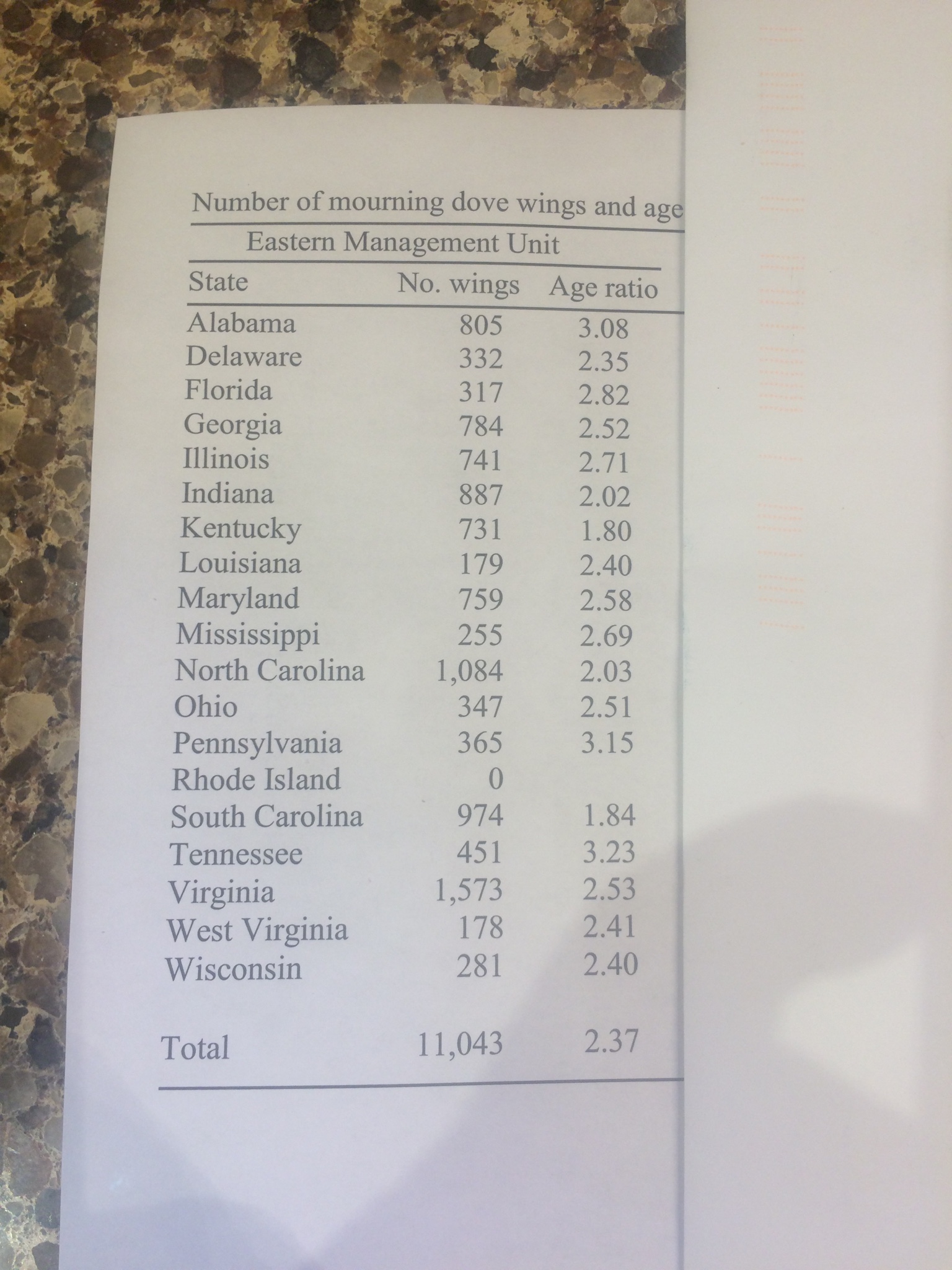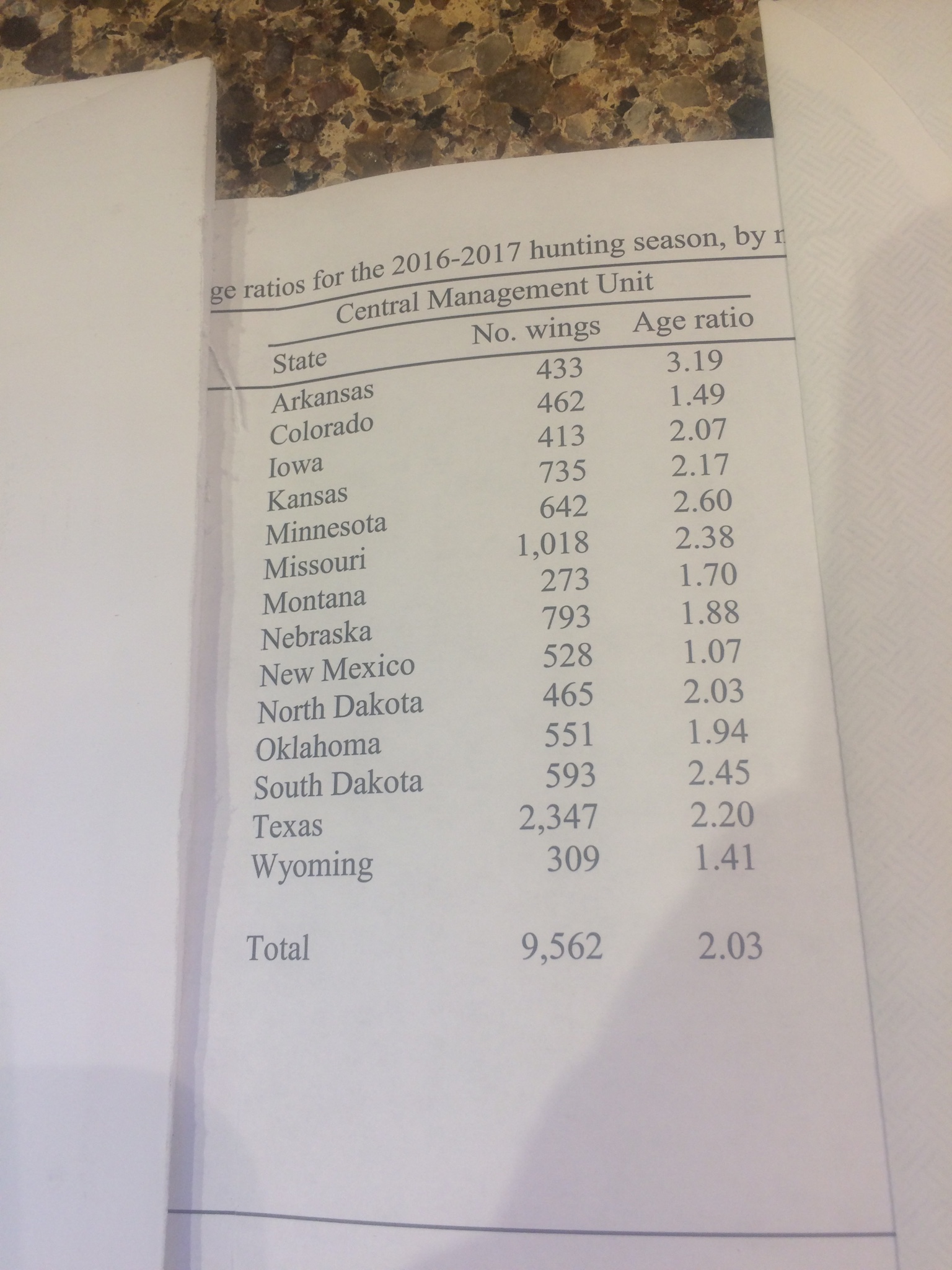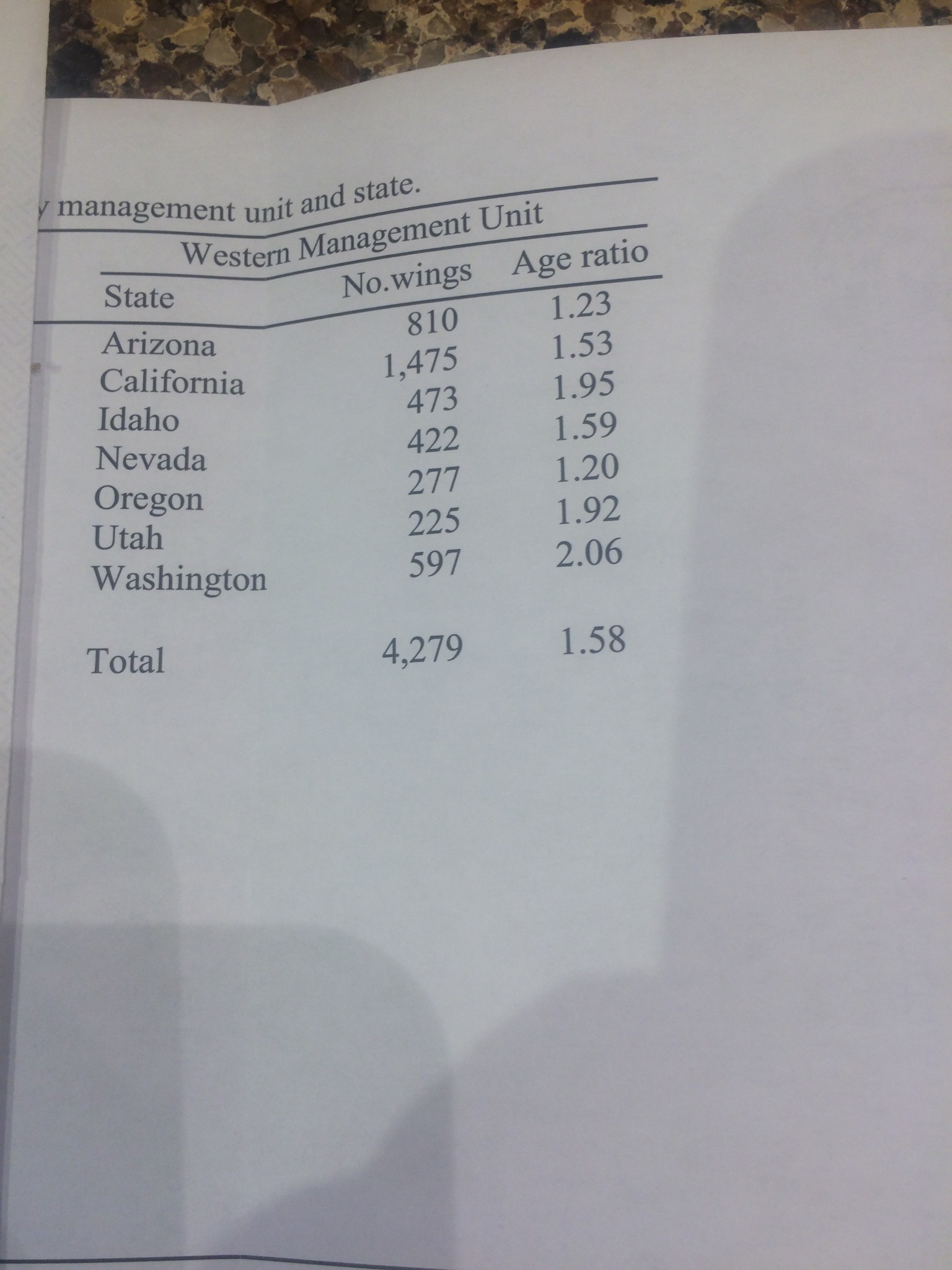Early 2016 some of us received a request to participate in a nationwide dove management from the Fish and Wildlife division of the Dept of the interior.
Hunters were asked to send in wings that would be used to determine age ratios. (Young of the year per adult)
I'm always game to do things like this, and I got the results yesterday.



Hunters were asked to send in wings that would be used to determine age ratios. (Young of the year per adult)
I'm always game to do things like this, and I got the results yesterday.












